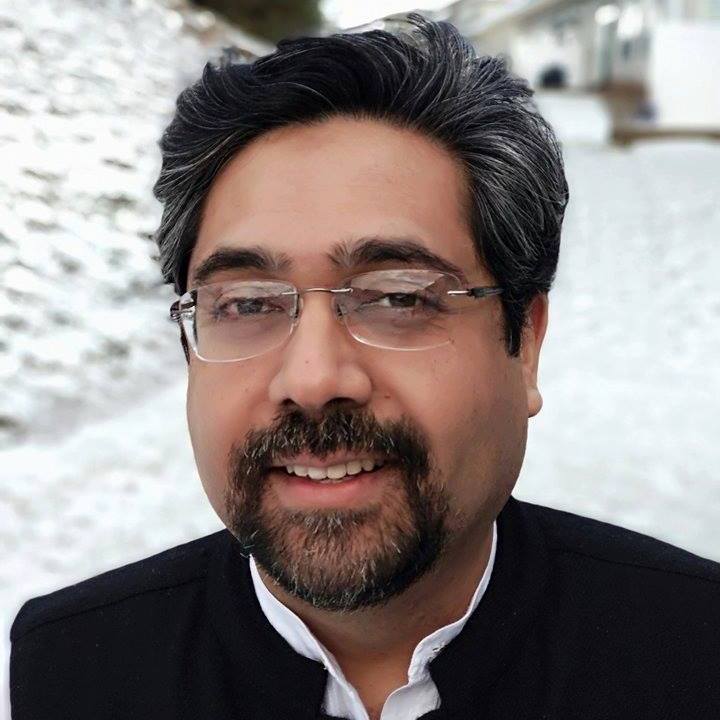Arijit Mahalanabis

“I am a devotee of Carnatic music, but not a practitioner,” says Arijit Mahalanabis, Hindustani vocalist from the U.S., and founder of the Seattle Indian Music Academy (SIMA), one of the largest institutions teaching Indian music abroad.
Arijit, who is in India after 21 years, takes an organic approach to music-making, informed by his eclectic background in the classical genres. He has recitals in Bangalore, Delhi and Chennai.
This article appeared in The Hindu.
With advanced degrees in Mathematics and Computer Science, Arijit worked at multinational aerospace and software firms before focussing full time on music. “I was working on defence projects in the U.S. when September 11 and its aftermath happened,” he says, referring to the terrorist attacks in 2001. “The fact that my work could be used for purposes that did not align with my ethical code led to a conflict within me.”
Arijit left his job soon after. Later, he began teaching Hindustani music. He expected five or six students, but 35 people showed up. “It was September 2008 – that was the beginning of SIMA.” SIMA now has over 250 students with six faculty members teaching vocal, tabla, sarod, sitar, surbahar, rudraveena, piano, guitar, pakhawaj and Kathak. “I consider teaching to be my calling. Holistic and humanistic education is essential to develop empathy for others. Our students have wide and varied reasons for embarking on their musical journey. We help them find the meaning of music in their lives,” he says.
He ensures that students are taught to think and ponder. Theory elements are incorporated in every class. “Theory should not be divorced from practice,” he says.
To see practitioners in action, SIMA has brought in leading artists to perform including Pt. Ajoy Chakrabarty, the Gundecha Brothers, Buddhadeb Dasgupta, Uday Bhawalkar, Aditi Kaikini Upadhya, Samir Chatterjee and Anupama Bhagwat (of Chennai). “It is compulsory for anyone who performs at SIMA to also hold a workshop. Students should be able to interact with the performers and learn.”
Arijit’s own trajectory in music was not conventional. As a child, he listened to landmark recordings that influenced him such as Ustad Bade Ghulam Ali Khan’s five-minute khayals, Ustad Amir Khan’s Darbari and Kishori Amonkar’s Jonpuri. His formal learning, began informally in 1980, when he accompanied his sister to her lessons with Shahana Banerjee in Delhi. The teacher found the brother more involved and offered to teach him free of charge.
Soon, the family moved to State College, Pennsylvania. In 1988, Arijit lost his father to cancer. “I found that only music provided any solace. I joined the local group, Raaga, where I practised and did research in both Hindustani and Carnatic music for seven years.”
Arijit has analysed and published research papers on both styles. “Just as we cover many subjects in school but then focus on one in college, one should study and understand all forms of music before specialising. It is almost impossible to develop in-depth understanding of both Carnatic and Hindustani – the only one to have done this successfully is the late M.S. Gopalakrishnan,” he says.
Arijit focussed on Hindustani music. Shantha Benegal, a student of Ustad Z.M. Dagar, Ustad Yunus Khan and Pt. Murli Manohar Shukla, was instrumental in exposing him to several different gayakis in dhrupad, khayal and thumri. Prof. Ramesh Gangolli encouraged him in his theoretical explorations. Several visiting artists played influential roles including Samir Chatterjee, Uday Bhawalkar, Aditi Kaikini Upadhya and Neela Bhagwat.
Arijit is one of the few artists who perform dhrupad, khayal and thumri. He explains that until around the 1970s, teachers would train Hindustani musicians in all three. As someone who is not a product of the Indian educational system, but teaches an Indian art form to those who are, what are his thoughts on achieving musical excellence? “The usual pedagogical approach prevents spontaneity in our music. Indian classical music is organic – it has to come from the heart and the mind. The very words manodharma and kalpanaswara highlight that. The feeling that you should follow only a certain path should be removed. One should be intellectually engaged but not restricted or forced to conform,” he says.